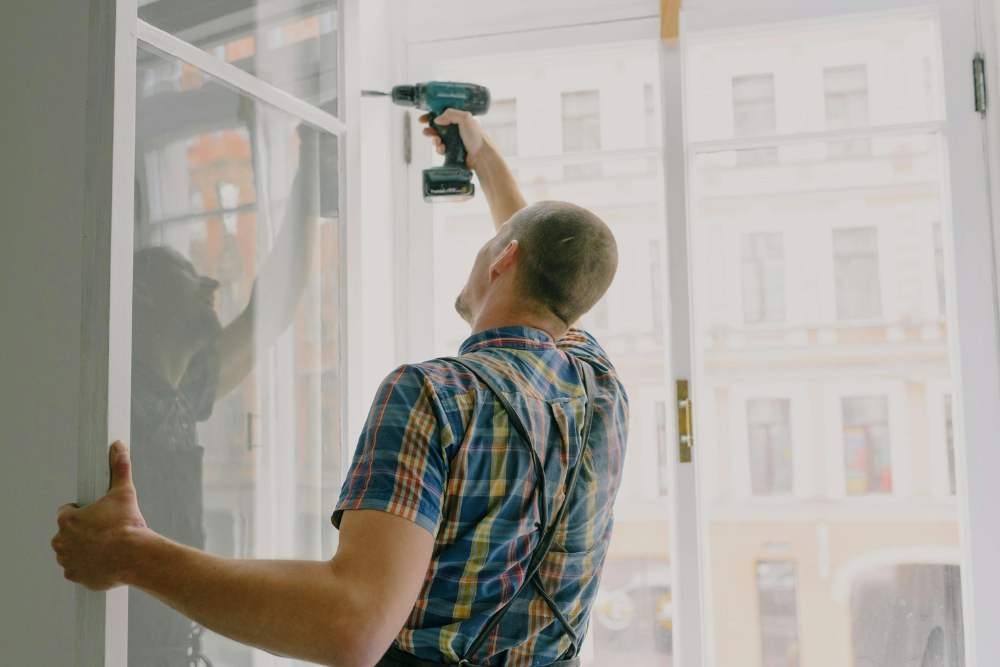A shattered or cracked window never happens at a convenient time. Whether it is the result of a storm-tossed branch, an errant baseball, a burglary attempt, or simple wear and tear, damaged glazing leaves your home or business exposed to weather, pests, and security risks. This in-depth guide walks you through everything you need to know about emergency window glass repair from first response and short-term fixes to selecting the right professional and preventing future breakages.
2. Why Emergency Window Repair Matters
2.1. Security Risks
A broken pane is a clear invitation to opportunistic intruders. Even a small crack weakens the glass, making forced entry easier.
2.2. Weather Protection
Rain, wind, dust, and extreme temperatures can swiftly infiltrate through the gap, damaging interiors and driving up energy bills.
2.3. Safety Hazards
Jagged shards pose a serious threat to children, pets, and anyone nearby. Glass fragments on the floor can also cause hidden injuries later.
3. Common Causes of Sudden Glass Failure
| Cause | Typical Scenario | How to Recognize It |
|---|---|---|
| Impact | Sports accident, vandalism, hail | Obvious hole, radiating cracks |
| Thermal Stress | Rapid temperature swings | Long, edge-to-edge crack |
| Settling of Building | Foundation shift | Crack starts at frame corner |
| Defective Glazing | Poor installation | Cloudy seal, spontaneous breakage |
4. Immediate Actions: The 15-Minute Safety Checklist
-
Clear the Area – Evacuate children and pets.
-
Put on Protection – Wear thick gloves, closed shoes, and eye protection.
-
Stabilize or Remove Loose Pieces – Use duct tape in an “X” pattern over cracked sections; carefully remove hanging shards.
-
Clean Up Debris – Sweep, vacuum, then wipe with a damp paper towel to capture splinters.
-
Secure the Opening – Board up with plywood or apply heavy-micron plastic sheeting and exterior-grade tape.
-
Control Climate – Turn off HVAC in the affected room to prevent pressure changes that worsen cracks.
-
Call a Professional – Contact a 24-hour glazier if the opening cannot be safely secured or repaired yourself.
5. Temporary Patch Options
| Material | When to Use | Pros | Cons |
|---|---|---|---|
| Thick polycarbonate sheet | Large holes, high-impact risk | Tough, reusable | Costly, requires trimming |
| Cardboard & painter’s tape | Overnight stop-gap | Readily available | Not weatherproof |
| Clear packing tape | Hairline cracks | Invisible, quick | Minimal strength |
| Shrink-film insulation kit | Small winter crack | Adds thermal layer | Seasonal, fragile |
6. Choosing the Right Emergency Glazing Service
6.1. 24/7 Availability
Look for teams that guarantee arrival within two hours, even on holidays.
6.2. Certified Technicians
Accreditations from bodies like the National Glass Association (NGA) or relevant local licensing boards indicate quality workmanship.
6.3. Mobile Workshops
A fully stocked van allows on-site cutting and fitting, reducing return visits.
6.4. Insurance Handling
Reputable companies help document damage for claims and work directly with insurers.
7. Cost Breakdown: What Influences Your Bill?
-
Glass Type – Tempered, laminated, low-E, double-pane, or specialty decorative pieces vary widely in price.
-
Size & Access – Larger panes and high-rise installs demand extra labor or equipment (e.g., scaffold, boom lift).
-
After-Hours Surcharge – Expect a 15–30 % premium for midnight calls.
-
Disposal Fees – Safe removal and recycling of broken glass incur small but common charges.
8. DIY vs. Professional Replacement
| Factor | DIY | Professional |
|---|---|---|
| Skill Needed | Moderate carpentry & glazing | Expert |
| Tools Required | Glass cutter, glazing points, putty | Industrial cutters, sealants |
| Safety | Higher personal risk | Insured technicians |
| Warranty | None | 1–10 years typical |
Rule of thumb: If the pane is larger than 2 ft × 2 ft, double-glazed, or in a high traffic area, call a pro.
9. Preventive Measures to Avoid Future Emergencies
-
Upgrade to Laminated or Tempered Glass – Stronger against impact and thermal stress.
-
Install Storm Shutters or Security Film – Extra layers disperse force and hold shards in place.
-
Trim Overhanging Branches – Reduces storm-related breakage.
-
Maintain Frames and Seals – Water infiltration rots wood and corrodes metal, loosening panes.
-
Use Window Sensors – Smart alarms alert you the instant glass is compromised.
10. Environmental and Energy Considerations
Broken windows leak conditioned air. When replacing, consider low-emissivity (low-E) coatings, argon-filled double panes, or triple glazing to cut energy costs by up to 30 % compared with single pane glass.
11. Insurance & Documentation Tips
-
Photograph damage from multiple angles before cleanup.
-
Retain broken pieces if the insurer requests inspection.
-
Keep receipts for emergency board-up and final glazing.
-
File claim within provider’s specified window—often 24–48 hours after the incident.
12. Conclusion
Emergency window glass repair is more than a quick patch job—it is about restoring safety, comfort, and peace of mind. Acting swiftly to secure the site, understanding your temporary fix options, and partnering with a certified glazier will minimize risks and costs. Finally, investing in stronger, energy-efficient glazing and regular maintenance can drastically reduce the likelihood of future breakages. When glass shatters, use the steps in this guide to move from chaos to calm with confiden

